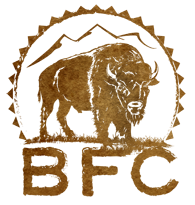“This is no way to treat America’s National Mammal, which is sacred to so many tribes” said Nez Perce scientist James Holt, the executive Director of Buffalo Field Campaign.
For Immediate Release:
January 31, 2023
Contacts:
Tom Woodbury, Communications Director
Buffalo Field Campaign
This email address is being protected from spambots. You need JavaScript enabled to view it.
(406) 646-0700 (office)
(650) 238-8759 (private)
James Holt, Executive Director
Buffalo Field Campaign
This email address is being protected from spambots. You need JavaScript enabled to view it.
(208) 791-3306
Gardiner, MT - “This is no way to treat America’s National Mammal, which is sacred to so many tribes” said Nez Perce scientist James Holt, the executive Director of Buffalo Field Campaign.
Late last week, wildlife advocates witnessed a scene they hope will soon be relegated to the past - two horse trailers moving out of Gardiner, Montana, filled with about twenty wild bison from Yellowstone. They were then informed by officials monitoring the hunt near the Park’s northern boundary that these unlucky bison, who had wandered into the Stephens Creek trap facility operated by the Park Service to enjoy some complimentary hay, at taxpayer’s expense, were on the way to a slaughterhouse.
“Wild bison have been hunted by people here since time immemorial,” Holt said. “But there is nothing natural, or even moral, about treating these sacred, wild beings like domestic livestock,” Holt asserted.

On Tuesday, upon learning that more shipments are expected this week, Buffalo Field Campaign raised questions over the need for resuming such shipments, which are so obviously traumatizing to buffalo who have never been penned up in their lives.
“The U.S. Fish & Wildlife Service is currently considering Yellowstone’s buffalo for potential listing under the Endangered Species Act, based on the application of best available science,” said Tom Woodbury, a spokesperson for BFC. “And at the last meeting of the bison managing partners, the Park Service insisted that ‘there was no science-based reason’ to manage for a declining population,” Woodbury noted. (See: NPS Winter Operation Mtg. Notes, p. 12).
At the November public meeting, called for the purpose of considering the bison management winter operations plan, the partners seemed to agree on a winter season cap for bison removal - via hunting and quarantine for so-called “bison conservation transfers” - of between the 10% suggested by the tribal partners, or 550, and a 14% cap suggested by the Park Service, or 770, to maintain a stable population of around 5500-6000 Yellowstone bison (Ibid., pp. 11-12).
The Tribes set a target of removing 300-700 by hunting at the public meeting. Having already exceeded 500 bison taken by hunters, it seems quite likely they will reach their agreed-upon cap of 700 bison, with most of the females carrying fetuses. There are another 500+ bison inside the Stephens Creek trap, with the expressed hope of placing up to 200 seral-negative bison (i.e., those free from brucellosis anti-bodies) into quarantine for the transfer program, thanks to expanded facilities to meet a growing demand from Tribes all around the country.
“That adds up rather quickly to 900,” Woodbury pointed out. “That exceeds the so-called cap on removal right there,” he continued, "and there was never any discussion at the day-long meeting of sending any bison off to slaughterhouses.”
The state of Montana, represented at the winter operations plan meeting by the Department of Livestock, refused to agree that bison should be managed on a scientific basis, and was also the only partner unwilling to consent to the need to manage for an increasing, or even stable, population of Yellowstone bison to meet the growing demands of Tribal Nations for subsistence hunting and transfers.
According to pronouncements from the U.S. Supreme Court, including the 2019 case of Herrera v. Wyoming, treaty tribes retain a “virtually unqualified right” to hunt for bison and other traditional game on National Forest lands like those that surround Yellowstone National Park. The Court reinforced an earlier decision finding that a tribal member’s exercise of off-reservation hunting rights, which are considered to be the supreme law of the land under Article Six of the U.S. Constitution, is largely “immune” from State regulation for other than conservation purposes. Montana refuses to recognize that Yellowstone Bison are wildlife, and is seeking to protect subsidized grazing on public lands for private livestock.
In spite of this clear contravention of tribal sovereignty, Supreme Court law and the U.S. Constitution, Montana’s livestock interests continue to hold America’s National Mammal hostage with the consent of its federal wildlife stewards and, thus far, the tribes. However, the bison management regime is based solely on the consent of those participating, and it is apparent that the patience of at least some of the Tribes is running short. The Nez Perce representative complained at the partners meeting that, due to Montana’s insistence on restricting natural migrations of Yellowstone Bison, the hunt was becoming increasingly dangerous, and earlier this month a Nez Perce tribal hunter was struck by a stray bullet while dressing his kill in the field.
“It seems pretty clear,” Holt concluded, “that until we get the livestock industry out of the business of managing wild bison, they will continue to be treated like livestock, and not accorded the honor and respect that they deserve.”
Buffalo Field Campaign is calling on the National Park Service to halt further shipments of wild bison to slaughterhouses, and manage for an expanding population based on the Service’s own science.
Buffalo Field Campaign works to protect America's last wild bison in Yellowstone.







